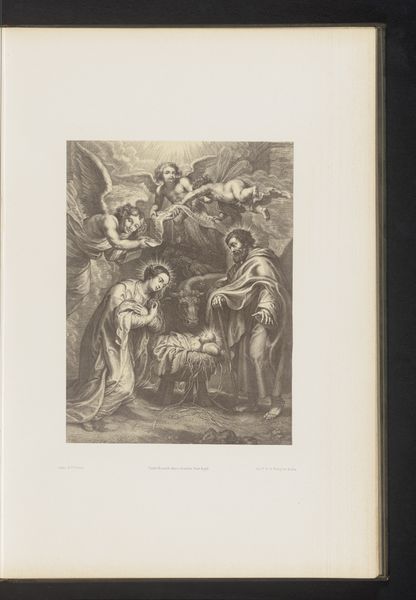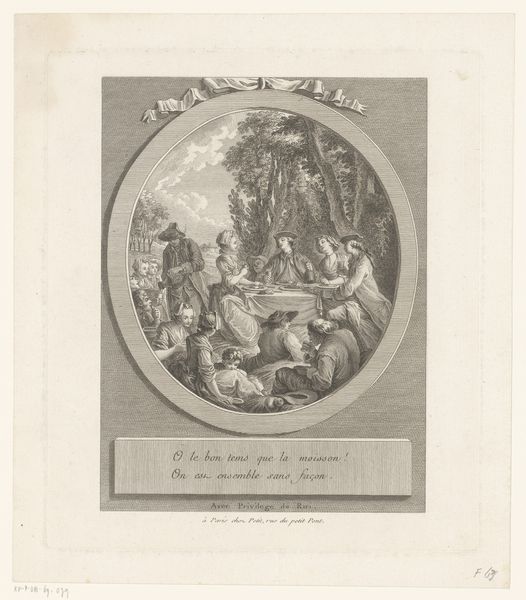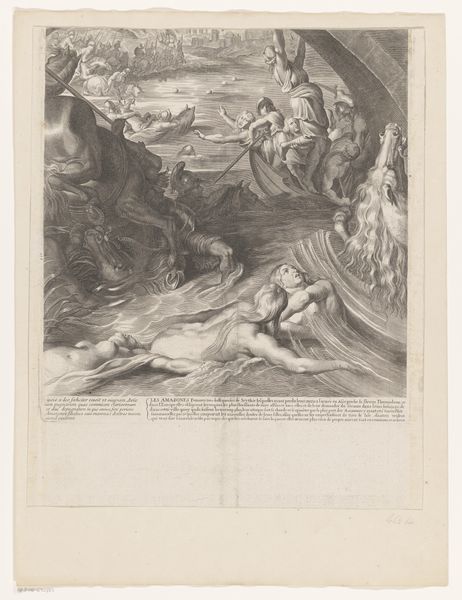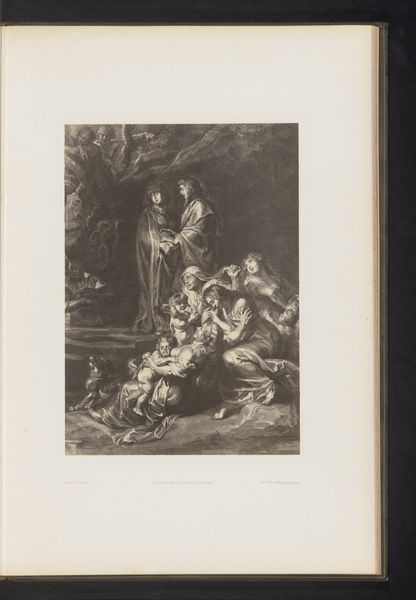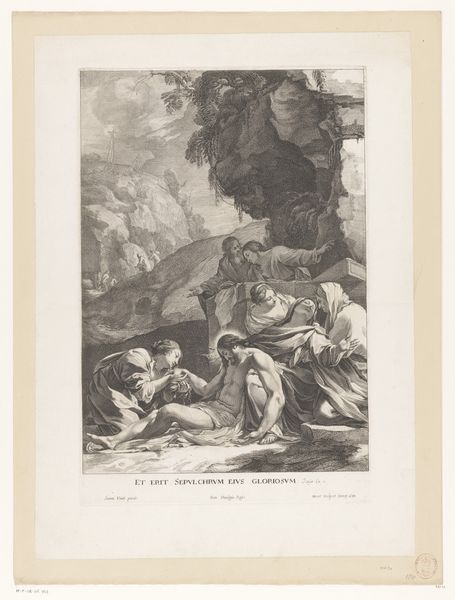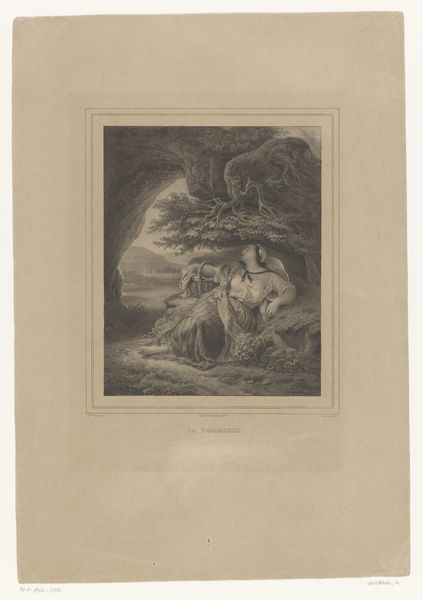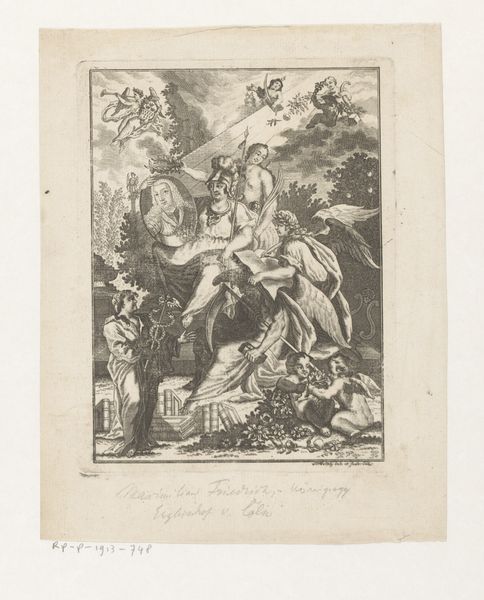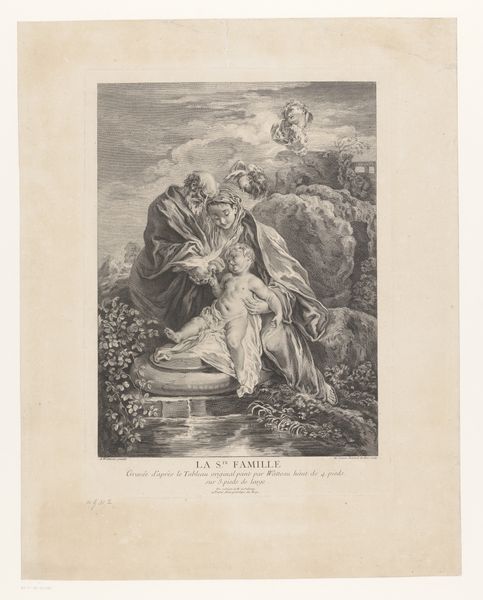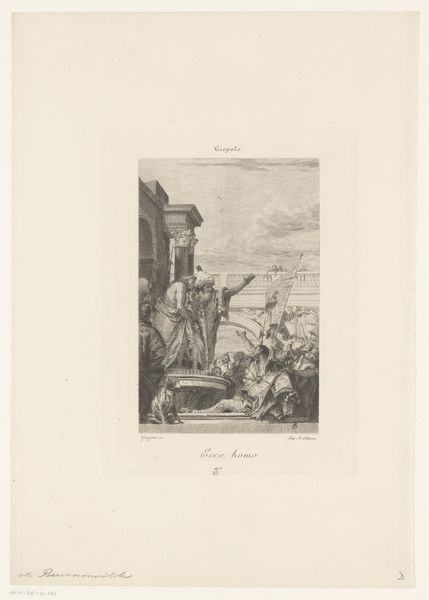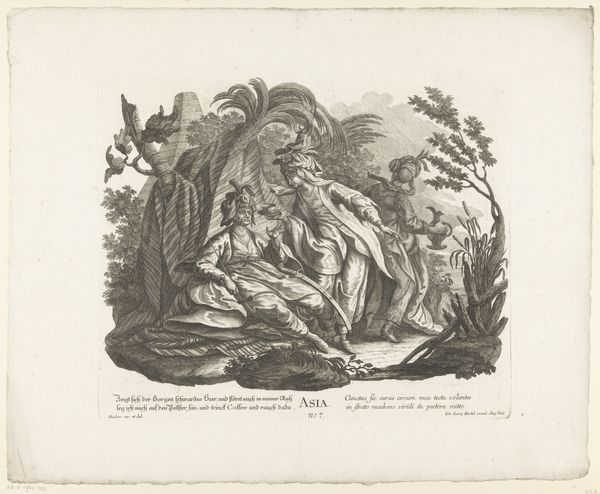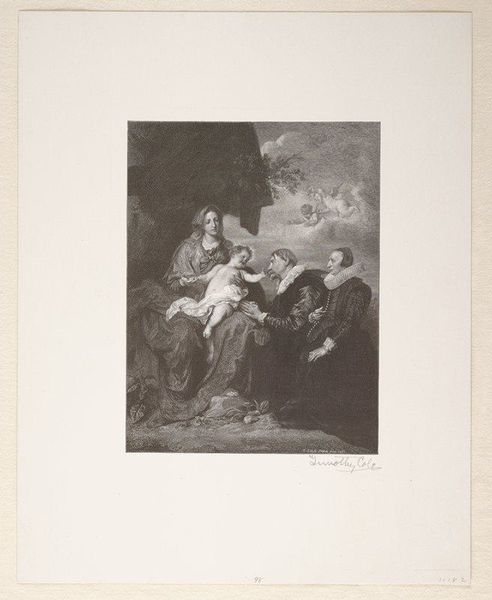
print, paper, engraving
#
narrative-art
# print
#
figuration
#
paper
#
romanticism
#
line
#
history-painting
#
academic-art
#
engraving
Dimensions: height 322 mm, width 226 mm
Copyright: Rijks Museum: Open Domain
Curator: Eugène Van Maldeghem created this engraving on paper, titled "Hemelvaart van Maria," in 1848. The print depicts the Assumption of Mary. Editor: Immediately striking is the stark contrast and the verticality. All those figures pressing upwards, with Mary elevated in what appears to be a burst of light. There's almost a Baroque sense of dynamism. Curator: Note how Van Maldeghem orchestrates a sophisticated play of light and shadow. The delicate hatching and cross-hatching give form to the figures, while also imbuing them with a certain ethereal quality, especially around the ascending Virgin. Editor: That burst of light, I think, carries the symbolic weight of divine grace and the culmination of Marian devotion. It visually communicates Mary’s unique role in salvation history. The apostles’ gestures below – some reaching, others kneeling – highlight their faith, bewilderment, or awe. Curator: I agree; the figures at the base demonstrate a range of emotive responses, but they all contribute to this rising compositional structure that brings one’s eyes to the upper center of the artwork, where Mary, and the divine, become manifest. This work falls neatly into Romanticism with its heavy reliance on diagonals. The rising and falling structural lines underscore themes of ascension and piety. Editor: Yes, the emphasis on intense emotion aligns with the Romantic spirit, but there’s also a deliberate invocation of familiar iconography. We see the visual cues related to Marian dogma and the narrative is instantly legible, contributing to its enduring appeal. The whole image is a concentrated statement about faith and salvation within Catholic tradition. Curator: Van Maldeghem utilizes the linear precision that's characteristic of engravings to convey the weight of the subject with utmost care. Each mark on the paper contributes to an artwork charged with both religious and formal meaning. Editor: It certainly shows us the cultural power of visual symbols and how religious themes echo through artistic expressions of this period. It offers an insight into a time steeped in tradition, presented in an evolving aesthetic form.
Comments
No comments
Be the first to comment and join the conversation on the ultimate creative platform.
